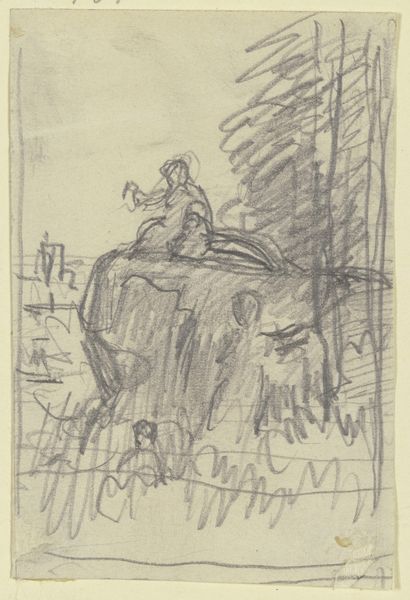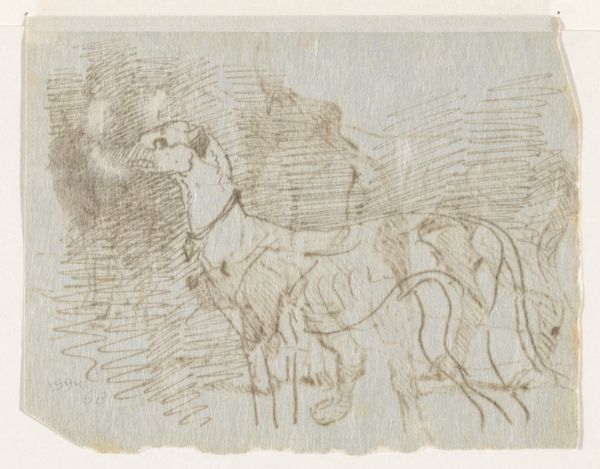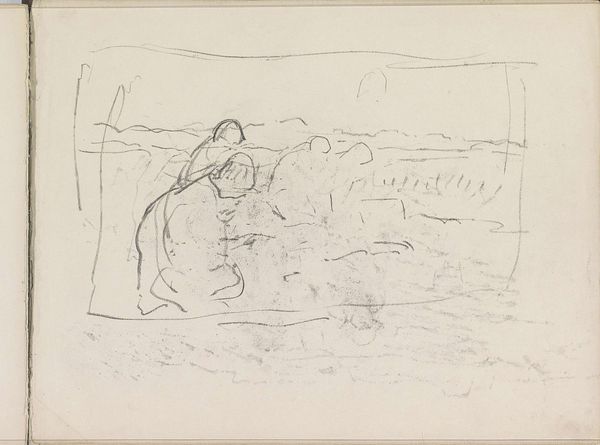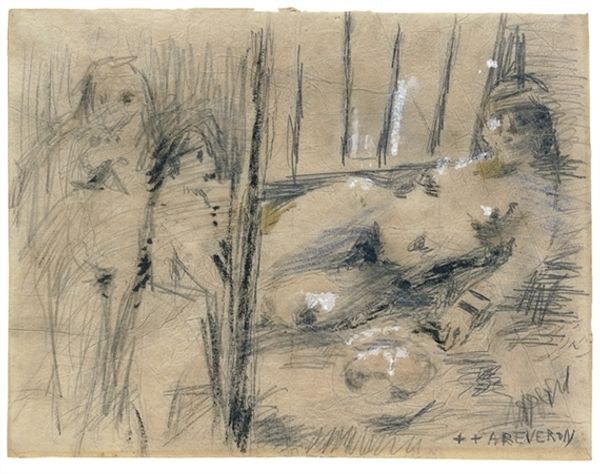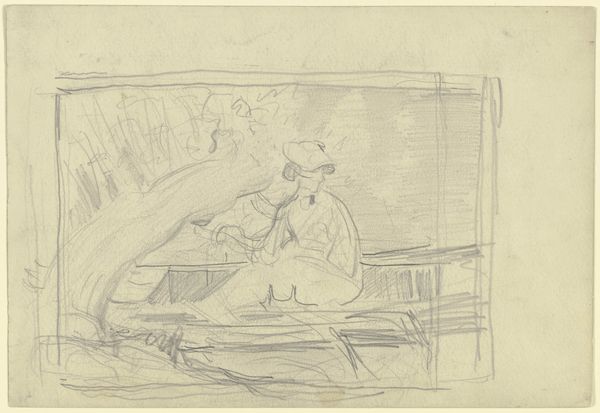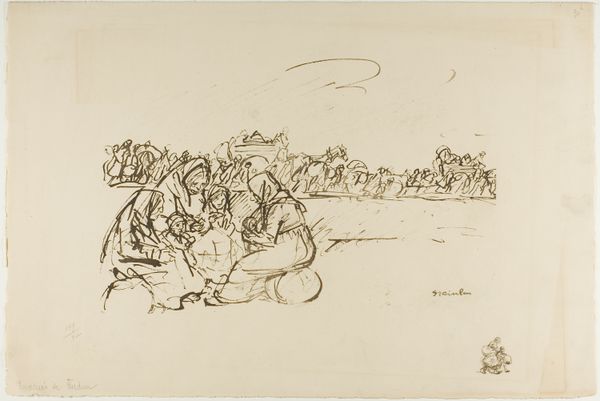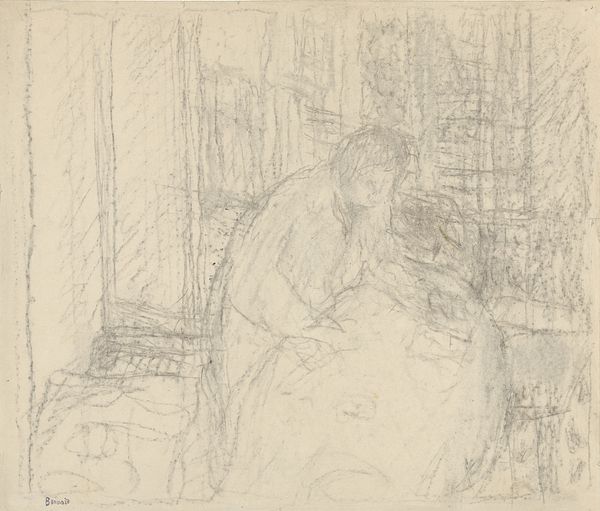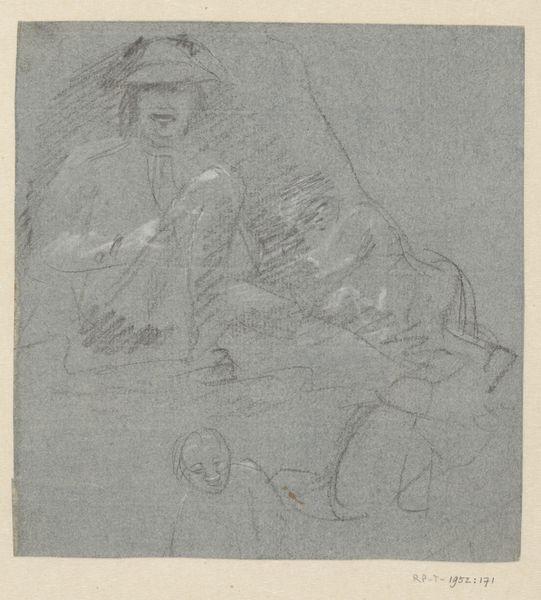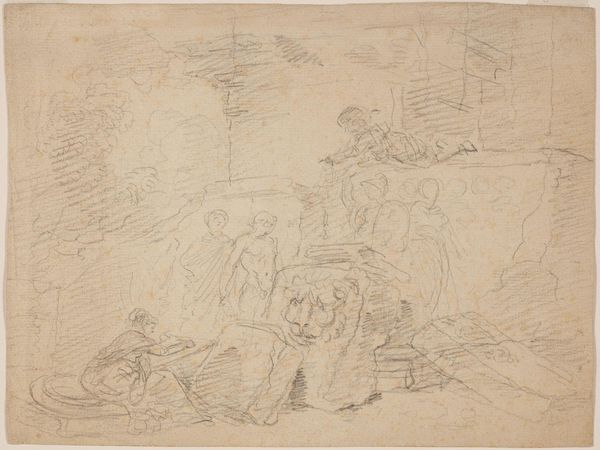
drawing, ink, pencil
#
drawing
#
ink drawing
#
landscape
#
ink
#
pencil
Copyright: Public Domain
Editor: Here we have Philipp Rumpf’s "Zwei Frauen im Freien lagernd," which translates to "Two Women Reclining Outdoors". The artwork's date is unknown, but the piece is made of ink and pencil. It feels so informal and fleeting; a snapshot of a relaxed moment. How would you interpret a seemingly casual drawing like this? Curator: Well, seeing this, I immediately consider the social context of leisure in the artist’s time. Public parks and outdoor spaces became increasingly accessible during the 19th century for all social classes, although often under strict social regulation, shaping interactions and visual encounters between different strata of society. Could this drawing then reflect or critique social barriers in a space presumably available for all? Editor: That's interesting! I hadn't thought of it as commenting on access, more that it felt intimate, as if the artist had captured his family informally. Curator: That might very well be too. Family relations became a frequent theme in art. How might this depiction contrast, for instance, with more staged, formal family portraits common at the time? Consider the potential for a drawing like this to show real connections rather than idealized images. Editor: So you think it is consciously presenting a different narrative, something less…official? The technique definitely lends itself to that reading, especially the use of a light, free line! Curator: Exactly. The informality, in turn, becomes a powerful statement, as such a choice reveals the cultural assumptions and expectations that it intentionally defies. What kind of social value did intimacy begin to obtain as photography became prominent? Did such informal drawings allow to capture an “aura” of everyday life that official representation failed to grasp? Editor: That’s a great way to think about it – it gives the drawing so much more depth than just a simple scene. I appreciate the shift in thinking about not only *what* is depicted, but also *why* this scene is portrayed this way in relation to its society. Curator: It works the other way round, as well. Paying attention to its artistic properties enhances how we perceive its role in social dynamics!
Comments
No comments
Be the first to comment and join the conversation on the ultimate creative platform.

